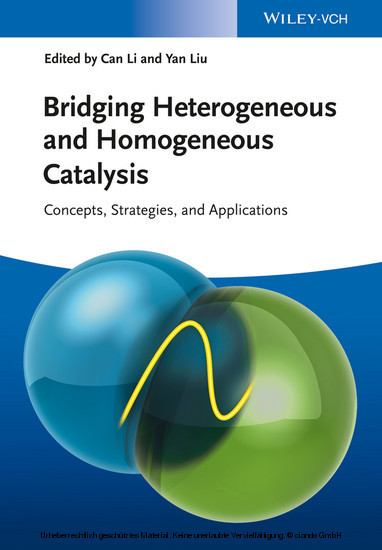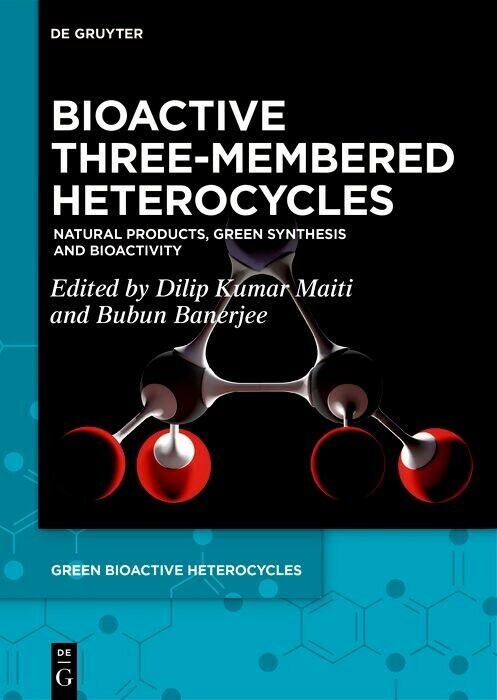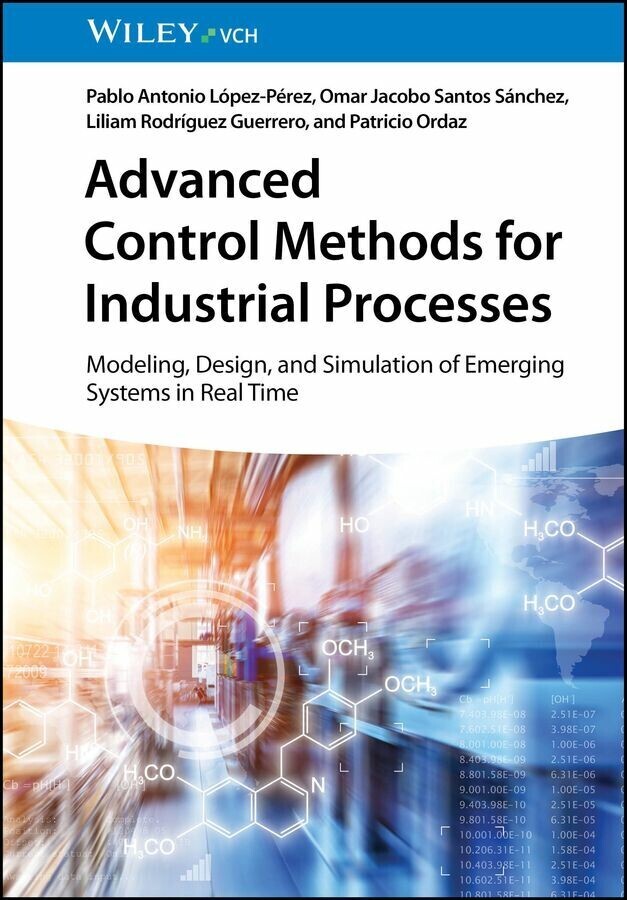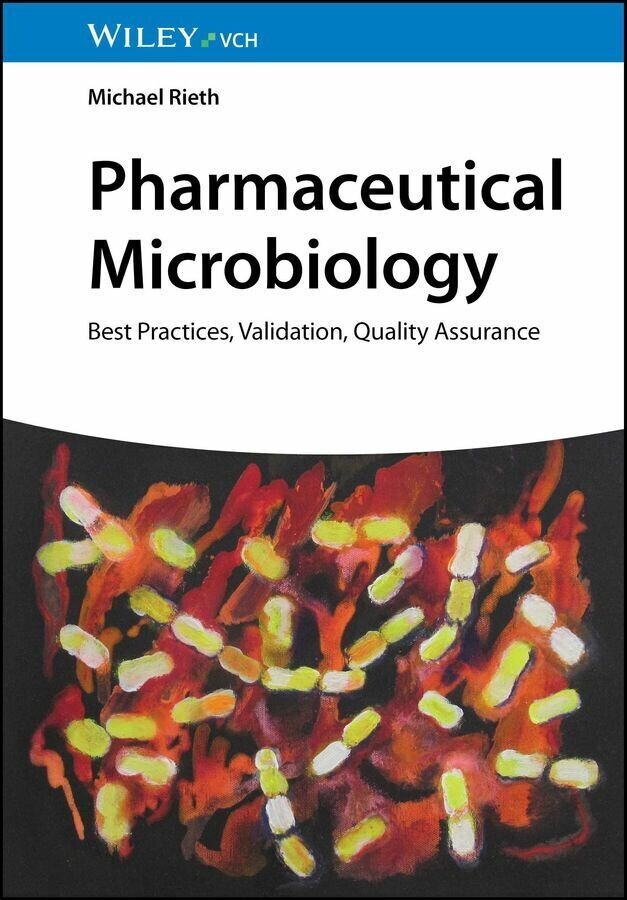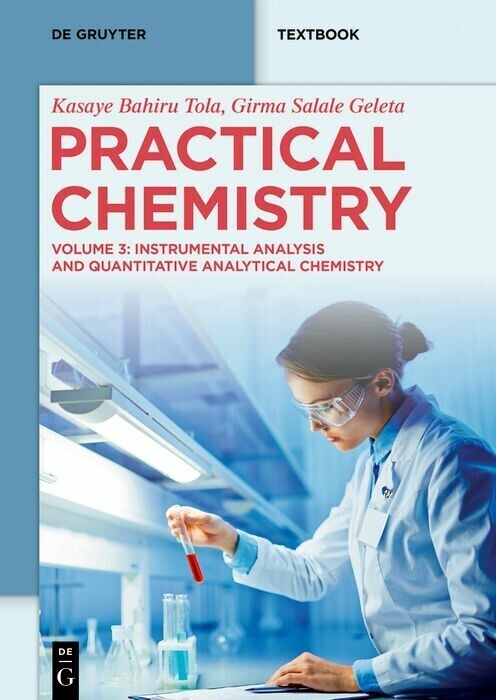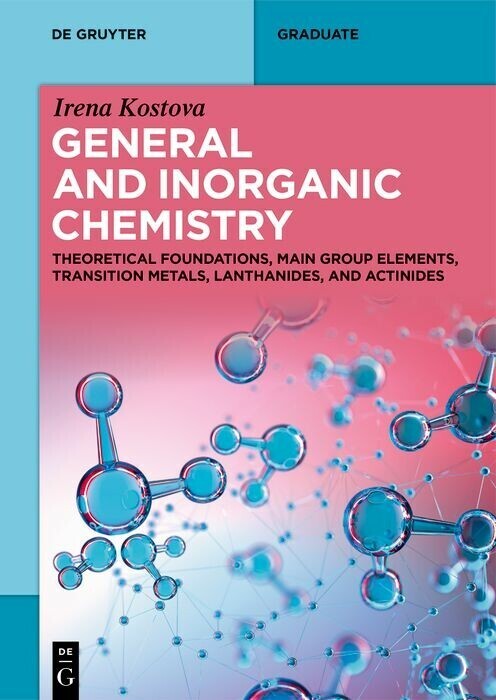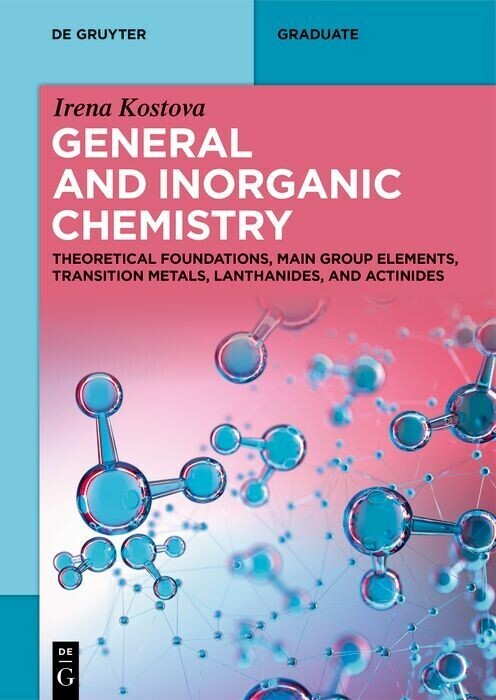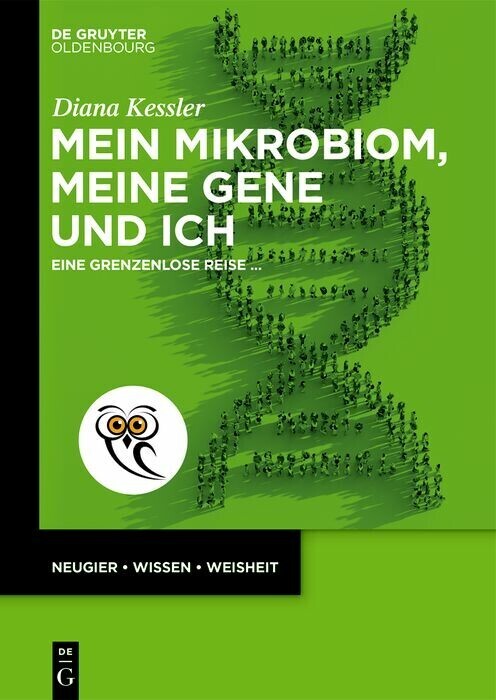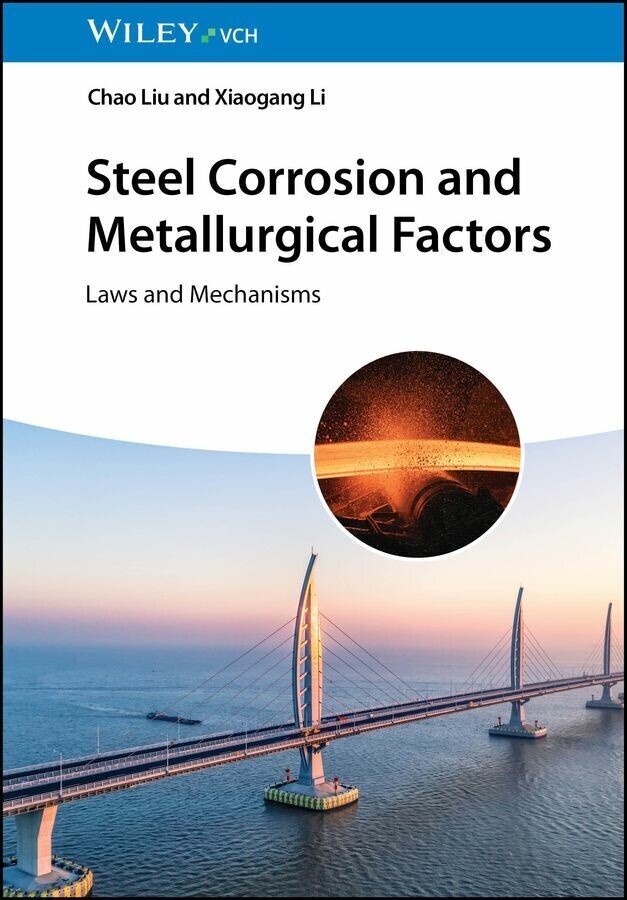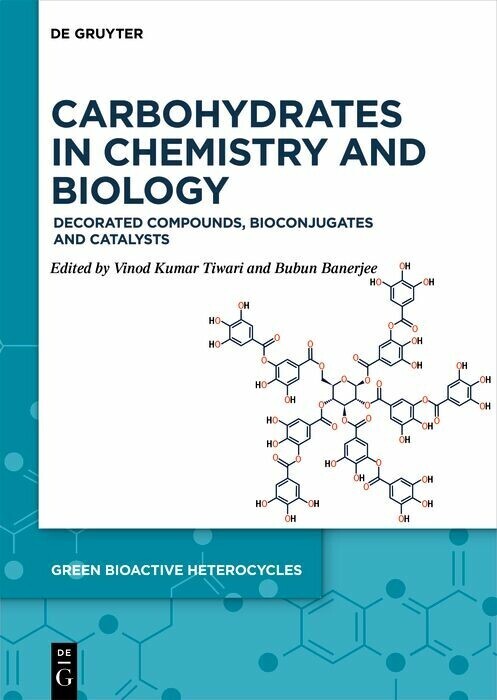Bridging Heterogeneous and Homogeneous Catalysis
Concepts, Strategies, and Applications
There are two main disciplines in catalysis research -- homogeneous and heterogeneous catalysis. This is due to the fact that the catalyst is either in the same phase (homogeneous catalysis) as the reaction being catalyzed or in a different phase (heterogeneous catalysis). Over the past decade, various approaches have been implemented to combine the advantages of homogeneous catalysis (efficiency, selectivity) with those of heterogeneous catalysis (stability, recovery) by the heterogenization of homogeneous catalysts or by carrying out homogeneous reactions under heterogeneous conditions.
This unique handbook fills the gap in the market for an up-to-date work that links both homogeneous catalysis applied to organic reactions and catalytic reactions on surfaces of heterogeneous catalysts. As such, it highlights structural analogies and shows mechanistic parallels between the two, while additionally presenting kinetic analysis methods and models that either work for both homogeneous and heterogeneous catalysis.
Chapters cover asymmetric, emulsion, phase-transfer, supported homogeneous, and organocatalysis, as well as in nanoreactors and for specific applications, catalytic reactions in ionic liquids, fluorous and supercritical solvents and in water. Finally, the text includes computational methods for investigating structure-reactivity relations.
With its wealth of information, this invaluable reference provides academic and industrial chemists with novel concepts for innovative catalysis research.
Can Li received his PhD degree from the Dalian Institute of Chemical Physics (China) in 1988, was promoted to full professor in 1993, and was elected as a member of the Chinese Academy of Sciences in 2003. He was appointed director of the State Key Laboratory of Catalysis at the Dalian Institute of Chemical Physics in 1998 and elected to the President of the International Association of Catalysis Societies in 2008. He is a member of the editorial board of more than 15 academic journals and has published more than 400 peer-reviewed papers, authorized 40 patents and delivered more than 60 invited and plenary lectures at national and international conferences. Under his supervision, more than 60 graduate students have obtained their PhD degrees. Among the prestigious awards he received are the International Catalysis Award, the National Award for Outstanding Young Scientists in China, and the HoLeungHoLee Prize. His research interests are Physical Chemistry, Catalysis, Environmental Catalysis, Chiral Catalysis, Photocatalysis, Solar Energy Utilization (photocatalysis and photovoltaic), In-situ Characterization, Resonance and Time-resolved Spectroscopy.
Yan Liu studied chemistry at Lanzhou University (China) and then moved to the State Key Laboratory of Organometallic Chemistry at the Shanghai Institute of Organic Chemistry to obtain his PhD degree under the supervision of Prof. Kuiling Ding in 2006. After three years of postdoctoral studies with Prof. Li Deng at Brandeis University (USA), he joined Prof. Can Li's group at the State Key Laboratory of Catalysis at the Dalian Institute of Chemical Physics in 2010 as associate researcher.
This unique handbook fills the gap in the market for an up-to-date work that links both homogeneous catalysis applied to organic reactions and catalytic reactions on surfaces of heterogeneous catalysts. As such, it highlights structural analogies and shows mechanistic parallels between the two, while additionally presenting kinetic analysis methods and models that either work for both homogeneous and heterogeneous catalysis.
Chapters cover asymmetric, emulsion, phase-transfer, supported homogeneous, and organocatalysis, as well as in nanoreactors and for specific applications, catalytic reactions in ionic liquids, fluorous and supercritical solvents and in water. Finally, the text includes computational methods for investigating structure-reactivity relations.
With its wealth of information, this invaluable reference provides academic and industrial chemists with novel concepts for innovative catalysis research.
Can Li received his PhD degree from the Dalian Institute of Chemical Physics (China) in 1988, was promoted to full professor in 1993, and was elected as a member of the Chinese Academy of Sciences in 2003. He was appointed director of the State Key Laboratory of Catalysis at the Dalian Institute of Chemical Physics in 1998 and elected to the President of the International Association of Catalysis Societies in 2008. He is a member of the editorial board of more than 15 academic journals and has published more than 400 peer-reviewed papers, authorized 40 patents and delivered more than 60 invited and plenary lectures at national and international conferences. Under his supervision, more than 60 graduate students have obtained their PhD degrees. Among the prestigious awards he received are the International Catalysis Award, the National Award for Outstanding Young Scientists in China, and the HoLeungHoLee Prize. His research interests are Physical Chemistry, Catalysis, Environmental Catalysis, Chiral Catalysis, Photocatalysis, Solar Energy Utilization (photocatalysis and photovoltaic), In-situ Characterization, Resonance and Time-resolved Spectroscopy.
Yan Liu studied chemistry at Lanzhou University (China) and then moved to the State Key Laboratory of Organometallic Chemistry at the Shanghai Institute of Organic Chemistry to obtain his PhD degree under the supervision of Prof. Kuiling Ding in 2006. After three years of postdoctoral studies with Prof. Li Deng at Brandeis University (USA), he joined Prof. Can Li's group at the State Key Laboratory of Catalysis at the Dalian Institute of Chemical Physics in 2010 as associate researcher.
1;Bridging Heterogeneous and Homogeneous Catalysis;5 1.1;Contents;7 1.2;Preface;17 1.3;List of Contributors;21 1.4;Chapter 1 Acid-Base Cooperative Catalysis for Organic Reactions by Designed Solid Surfaces with Organofunctional Groups;29 1.4.1;1.1 Introduction;29 1.4.2;1.2 Bifunctional Catalysts Possessing Both Acidic and Basic Organic Groups;30 1.4.2.1;1.2.1 Urea-Amine Bifunctional Catalyst;30 1.4.2.2;1.2.2 Sulfonic or Carboxylic Acid-Amine Bifunctional Catalyst;31 1.4.3;1.3 Bifunctional Catalysts Possessing Basic Organic Groups and Acid Sites Derived from Their Support Surface;35 1.4.3.1;1.3.1 Organic Base-Catalyzed Reactions Enhanced by SiO2;35 1.4.3.2;1.3.2 Amine-Catalyzed Reactions Enhanced by Acid Site on Silica-Alumina;39 1.4.3.3;1.3.3 Control of Acid-Base Interaction on Solid Surface;41 1.4.3.4;1.3.4 Cooperative Catalysis of Acid Site, Primary Amine, and Tertiary Amine;46 1.4.4;1.4 Prospect;47 1.4.5;References;48 1.5;Chapter 2 Catalytic Reactions in or by Room-Temperature Ionic Liquids: Bridging the Gap between Homogeneous and Heterogeneous Catalysis;49 1.5.1;2.1 Introduction and Background;49 1.5.2;2.2 Catalysis with IL-Supported or Mediated Metal Nanoparticles;50 1.5.2.1;2.2.1 Preparation of MNPs in ILs;51 1.5.2.1.1;2.2.1.1 IL Itself as the Reducing Agent;52 1.5.2.1.2;2.2.1.2 Molecular Hydrogen as Reducing Agent;52 1.5.2.1.3;2.2.1.3 NaBH4 as the Reducing Agent;54 1.5.2.1.4;2.2.1.4 Other Reducing Agents;55 1.5.2.2;2.2.2 Characterization of IL-Supported or Mediated MNPs;56 1.5.2.2.1;2.2.2.1 XPS and NMR;56 1.5.2.2.2;2.2.2.2 SEM and TEM;57 1.5.2.2.3;2.2.2.3 Molecular Dynamics Simulations;58 1.5.2.3;2.2.3 Hydrogenation Reactions;59 1.5.2.4;2.2.4 IL-Supported Pd NPs;60 1.5.2.5;2.2.5 IL-Supported Pt and Ir NPs;64 1.5.2.6;2.2.6 IL-Supported Ru NPs;65 1.5.2.6.1;2.2.6.1 IL-Supported Rh NPs;68 1.5.2.7;2.2.7 C-C Coupling Reactions;70 1.5.2.7.1;2.2.7.1 Suzuki Reaction;70 1.5.2.7.2;2.2.7.2 Mizoroki-Heck Reaction;73 1.5.2.7.3;2.2.7.3 Stille Reaction;75 1.5.2.7.4;2.2.7.4 Sonogashira Reaction;76 1.5.2.7.5;2.2.7.5 Ullmann Reaction;76 1.5.2.8;2.2.8 Brief Summary;77 1.5.3;2.3 Reactions Catalyzed by Solid-Supported IL: Heterogeneous Catalysis with Homogeneous Performance;78 1.5.3.1;2.3.1 Introduction;78 1.5.3.1.1;2.3.1.1 Design, Preparation, and Properties of Supported IL-Phase Catalysis;79 1.5.3.2;2.3.2 Design, Preparation, and Properties of Silica Gel-Confined IL Catalysts;83 1.5.3.2.1;2.3.2.1 Design, Preparation, and Properties of Covalently Supported IL Catalysts;84 1.5.3.3;2.3.3 Catalytic Reaction with Supported IL Catalysts;85 1.5.3.3.1;2.3.3.1 Catalytic Hydrogenation;85 1.5.3.3.2;2.3.3.2 Selective Oxidation;89 1.5.3.3.3;2.3.3.3 Catalytic Carbonylation Reaction;91 1.5.3.3.4;2.3.3.4 Water-Gas Shift Reaction;98 1.5.3.3.5;2.3.3.5 Isomerization and Oligomerization;100 1.5.3.3.6;2.3.3.6 Alkylation and Esterification Reactions;101 1.5.3.3.7;2.3.3.7 Asymmetric Catalysis;102 1.5.3.3.8;2.3.3.8 Enzyme Catalysis;105 1.5.3.4;2.3.4 Brief Summary;107 1.5.4;2.4 Outlook;108 1.5.5;References;108 1.6;Chapter 3 Heterogeneous Catalysis with Organic-Inorganic Hybrid Materials;113 1.6.1;3.1 Introduction;113 1.6.1.1;3.1.1 Ordered Mesoporous Silica;113 1.6.1.2;3.1.2 Organic-Inorganic Hybrid Materials;116 1.6.1.3;3.1.3 Heterogeneous Catalysis;117 1.6.2;3.2 Organic-Inorganic Hybrid Materials;119 1.6.2.1;3.2.1 General Advantages of Organic-Inorganic Hybrid Materials;119 1.6.2.2;3.2.2 Grafting and Co-Condensation;119 1.6.2.2.1;3.2.2.1 Amine Groups;119 1.6.2.2.2;3.2.2.2 Ionic Liquids (ILs);121 1.6.2.2.3;3.2.2.3 Others;123 1.6.2.3;3.2.3 Periodic Mesoporous Organosilicas (PMOs);124 1.6.2.3.1;3.2.3.1 Synthesis of PMOs with Surfactants;124 1.6.2.3.2;3.2.3.2 Aliphatic PMO;125 1.6.2.3.3;3.2.3.3 Aromatic PMO;126 1.6.2.3.4;3.2.3.4 Hybrid Periodic Mesoporous Organosilica (HPMO);126 1.6.3;3.3 Catalysis of Organic-Inorganic Hybrid Materials;127 1.6.3.1;3.3.1 Catalytic Application of Organic-Functionalized Mesoporous Silica by Grafting and Co-Condensation Method;127 1.6.3
| ISBN | 9783527675937 |
|---|---|
| Artikelnummer | 9783527675937 |
| Medientyp | E-Book - PDF |
| Copyrightjahr | 2014 |
| Verlag | Wiley-VCH |
| Umfang | 651 Seiten |
| Sprache | Englisch |
| Kopierschutz | Adobe DRM |

